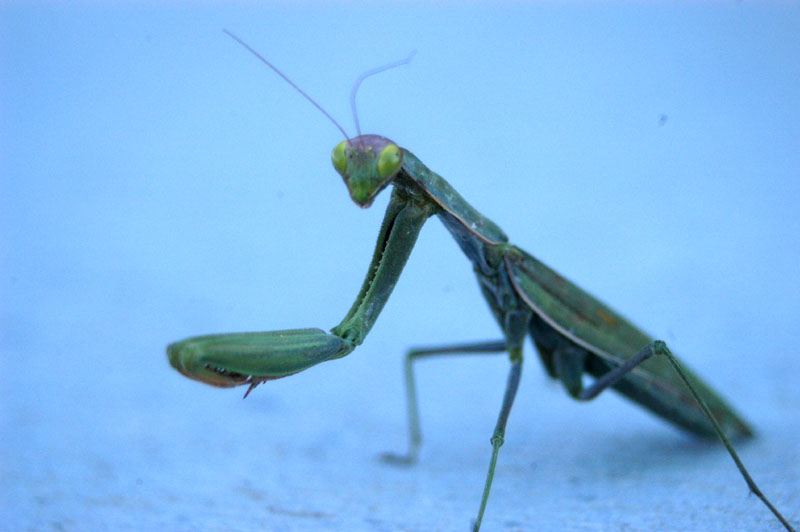Praying Mantis
Mantodea or mantises is an order of insects which contains approximately 2,200 in 9 families worldwide. A colloquial name for the order is "praying mantises", because of the typical "prayer-like" stance, although the term is often mis-spelled as "preying mantis" since mantises are notoriously predatory. Ttheir diet usually consists of living insects; larger species have been known to prey on small lizards, frogs, birds, snames, and even rodents. Most species are known to engage in cannabalism. The majority of mantises are ambush predators, waiting for prey to stray too near. The mantis then lashes out at remarkable speed. Some ground and bark species, however, pursue their prey rather quickly. Prey items are caught and held securely with grasping, spiked forelegs; the first thoracic segment, the protothorax, is commonly elongated and flexibly articulated, allowing for greater range of movement of the front limbs while the remainder of the body remains more or less immobile. The articulation of the head is also remarkably flexible, permitting nearly 300 degrees of movement in some species, allowing for a great range of vision (their compound eyes have a large binocular field of vision) without having to move the remainder of the body. As their hunting relies heavily on vision, they are primarily diurnal, but many species will fly at night. Mantises are masters of camouflage and most species make use of protective coloration to blend in with the environment, both to avoid predators themselves, and to better snare their victims. While mantises can bite, they have no venom, and while they can also slash captors with their raptorial legs they are not dangerous to humans. They do not appear to be chemically protected; nearly any large predatory animal will eat a mantis such as Scops owls, shrikes, bullfrogs and chameleons.
 |
Taken October 15, 2005, in my driveway just outside the garage. |